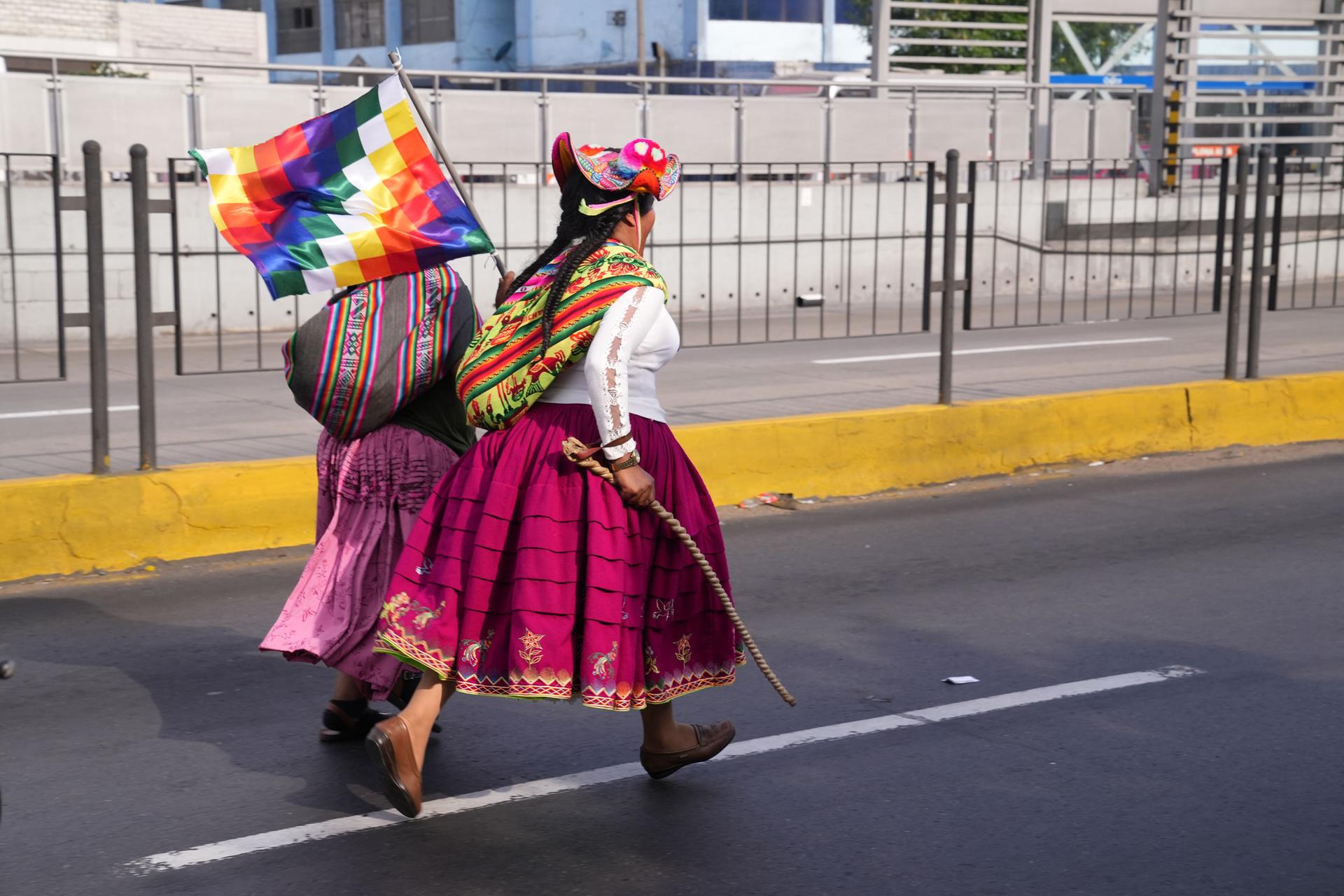At Nuevo Peru headquarters in Lima, the capital, about 100 protesters from Indigenous areas in the southern highlands have gathered to sleep there — and organize.
The political party Nuevo Peru has been heavily involved in anti-government protests that have recently swept across the South American country.
“It’s not enough to make statements or posts on social media,” said Gahela Cari, an Indigenous activist and Nuevo Peru’s secretary for international relations.
“We are taking actions to help people, who have endured years of discrimination and disrespect.”
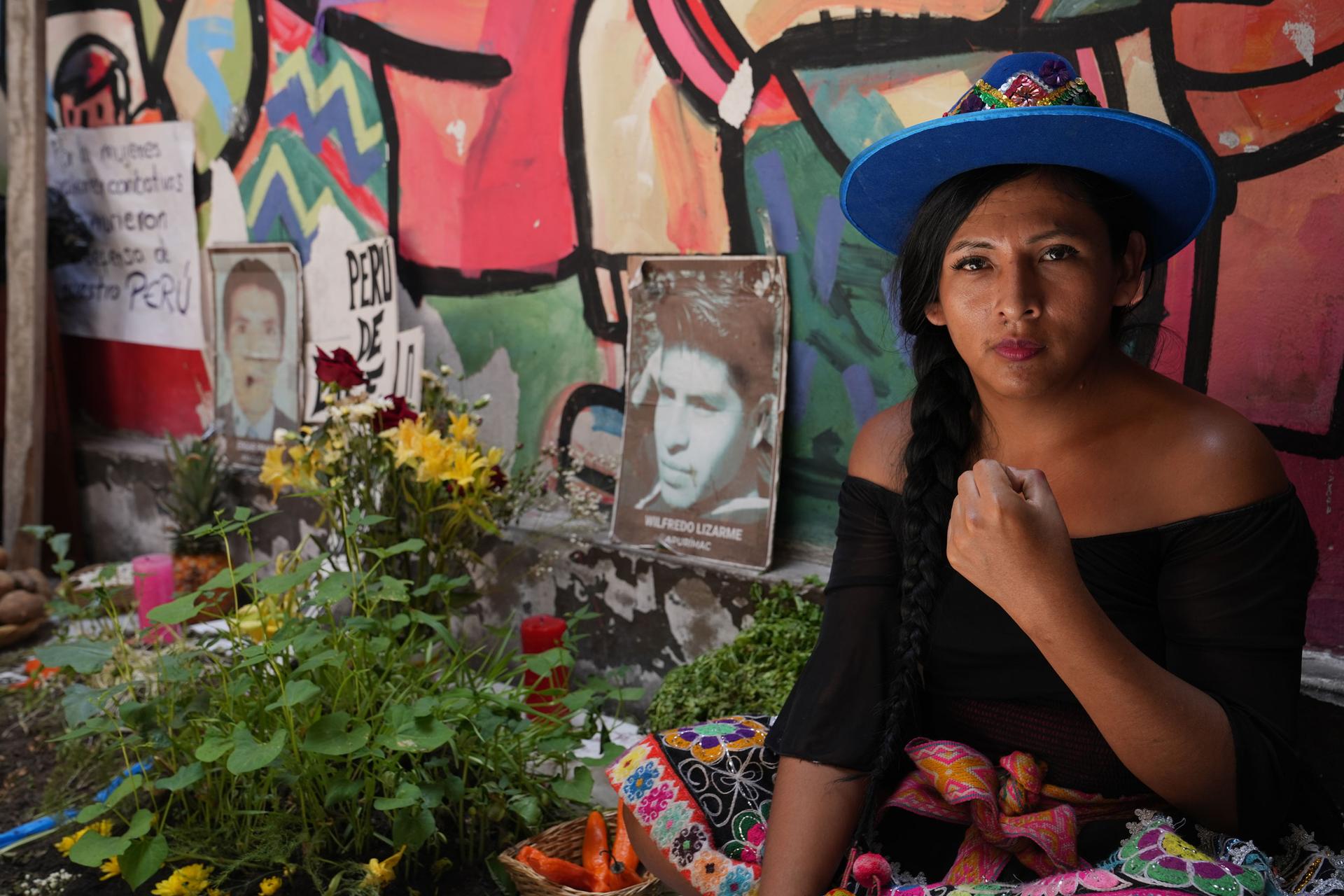
At the headquarters, volunteers store donations of food and clothes and cook around 500 meals per day for demonstrators.
Sixty people have been killed in Peru in protests that broke out in December of 2022 after President Pedro Castillo was arrested on treason charges and impeached by the nation’s Congress.
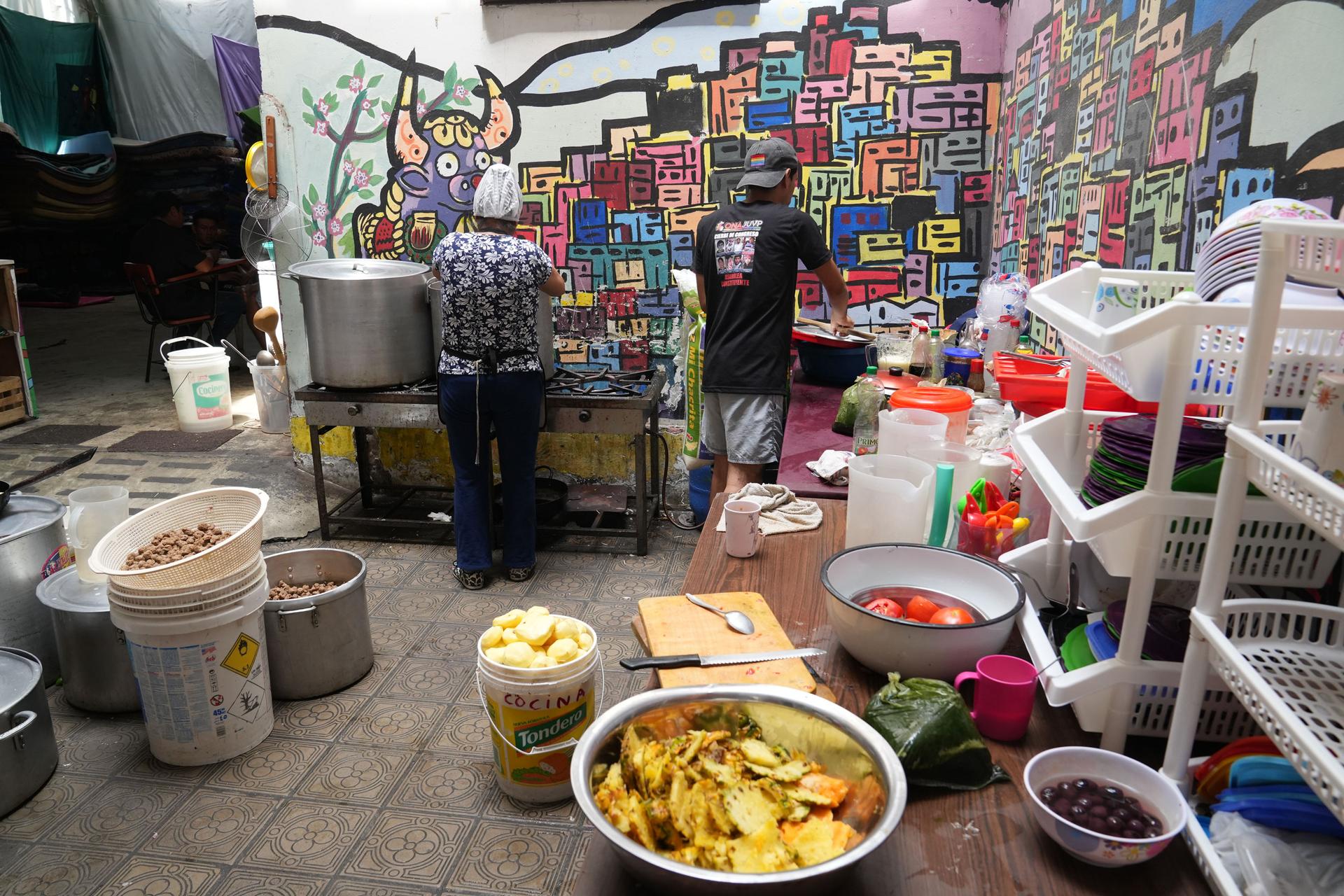
The protests have been led largely by Indigenous groups who have long been excluded from local politics and are now trying to have a greater say in how their country is run.
Castillo was removed after making an ill-fated attempt to dissolve congress and rule by decree, and his impeachment complied with Peruvian laws.
But it also angered many Indigenous people who were hoping that the union leader from a small Andean village would help to bridge economic gaps.
Roadblocks went up in largely Indigenous regions like Puno, where the economy has been stifled.
Protesters also blocked access to the world famous site of Machu Picchu and thousands traveled to Lima to have their voices heard, where they have been hosted by university students and movements like Nuevo Peru, which says it wants to defend the interests of Indigenous people.
“Our people have always struggled,” said Cari, who was shot with rubber pellets at a recent protest and still has a bandage on her right leg.
“And with Castillo’s removal people felt like their votes didn’t even count anymore.”
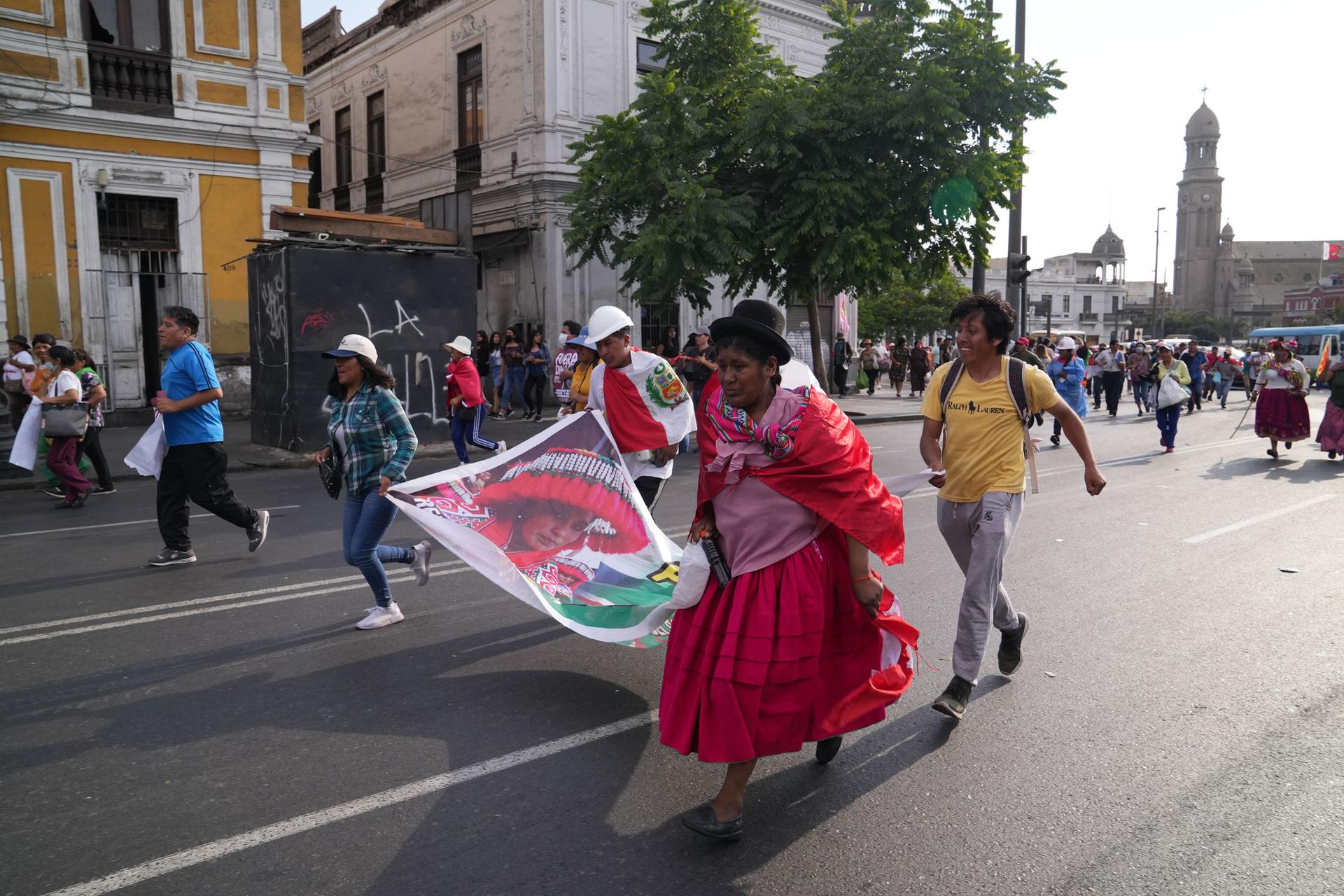
While protesters initially asked for Castillo’s return, their movement has now set its sight on longer lasting changes.
They want the new president, Dina Boluarte, to resign and are also asking for the country’s constitution to be changed.
“For too long we have been deprived of quality health care and education,” Cari said, who argues that one way to fix that would be through constitutional reforms.
Peru’s constitution currently limits the state’s role in the economy. And it makes it tougher for the government to raise taxes on the nation’s profitable gold and copper mines.
Indigenous groups hope that constitutional reforms could lead to more taxes on the mining industry. And perhaps turn the government into a major shareholder at some mines.
“These precious resources belong to the state, and we are not getting benefits from them,” said Juvenal Gil, a Quechua speaking miner from the region of Puno, who has been at the protests in Lima for three weeks.
“If these places where the gold is being mined had nice buildings and we were moving around in subways like in Dubai, I wouldn’t be complaining,” he added.
“But the truth is that we don’t even have good hospitals.”
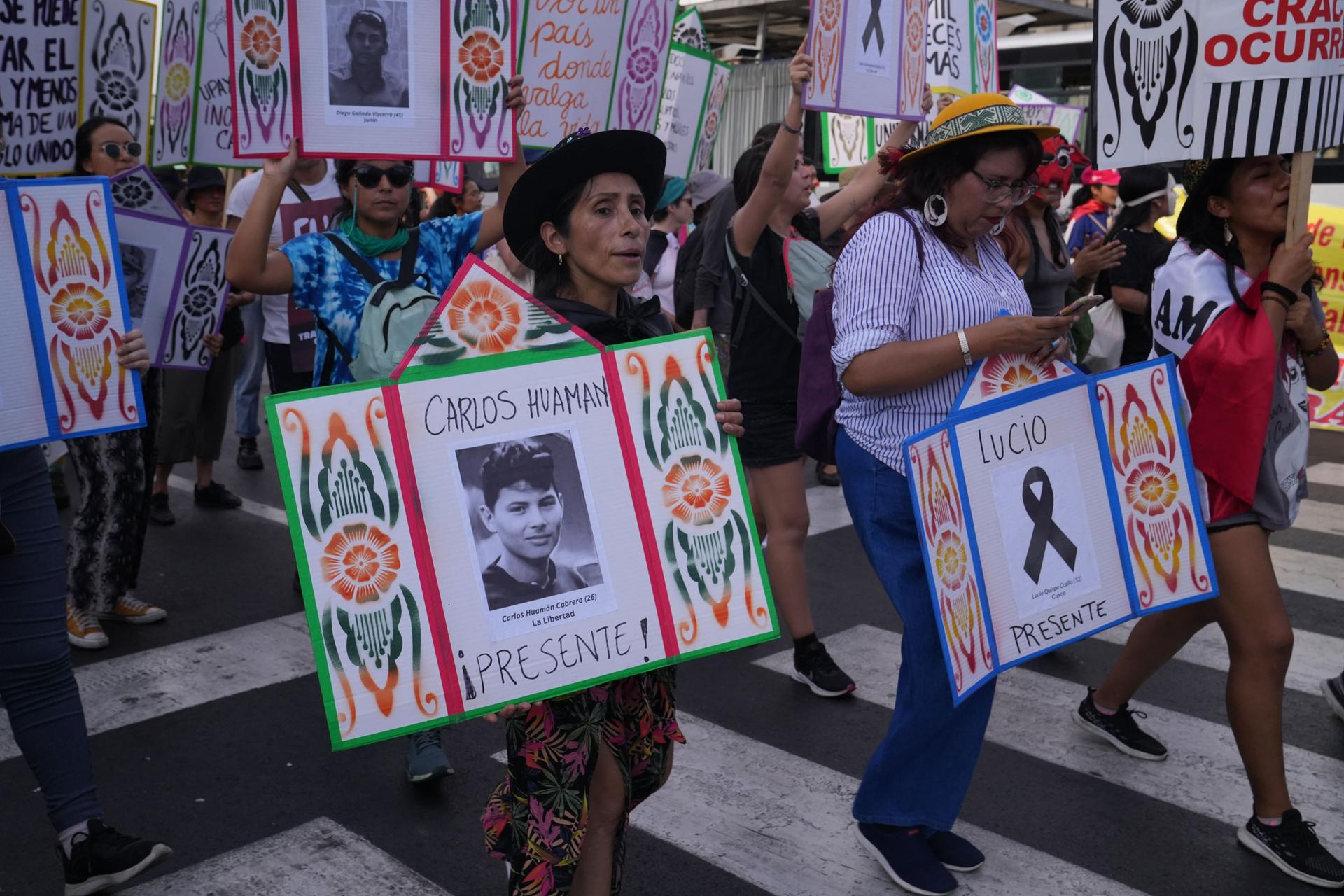
Peru’s constitution dates back to 1993, when the country was recovering from years of hyperinflation, caused by uncontrolled government spending.
During the past three decades conservative economic policies have tamed inflation and also helped to attract foreign investment. But some also argue that these policies have led to the neglect of public services.
“If you visit my home you will see that we have no running water,” said Maruja Inki an Indigenous activist who is also from the region of Puno.
“We have to use the water that comes from a river polluted by gold mines. Or we have to collect rainwater.”
To get any changes implemented, however, the Indigenous movement needs to increase its leverage in congress, where it currently lacks any meaningful representation.
A proposal to stage a referendum on whether Peru should have a new constitution was recently rejected by Peru’s Congress and elections are still scheduled for 2026 as legislators fail to agree on a new date.
Jo-Marie Burt, a politics professor and Peru expert at George Mason University, said that while Indigenous people in neighboring countries such as Ecuador and Bolivia have their own parties — and a large congressional presence — it’s been tougher for them achieve this in Peru.
“Peru, unlike Ecuador and Bolivia, has its capital, its center of power in Lima,” a coastal city, she said.
“Lima is the essential creole city where discrimination and stigmatization of Indigenous people is very strong, so the tendency has been for people to try to assimilate.”
Burt explained that violent conflicts in rural areas in which the state has attacked Indigenous communities and labeled them as supporters of terrorism, have also discouraged people from joining organizations with an Indigenous focus, even if they make up 25% of Peru’s population.
Back at Nuevo Peru’s headquarters, Gahela Cari said that her party has struggled to sign up new members, because many people in Peru have become disenchanted with politics.
But she hopes that the protests will help people realize that they need to fight for their rights.
“There are people taking to the streets to demand change and there are people mobilizing against inequality, and that motivates us,” she said.
